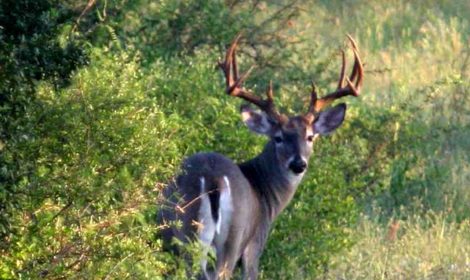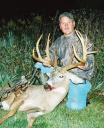
White-tailed deer the need cover and big, mature bucks relish it, but having too much cover is not necessarily a good thing. Open areas are needed to grow beneficial forbs for deer — and deer prefer habitat with a lot of edge — so providing a variety open areas within wooded habitats are deer magnets. This article gives a few tips on things to keep in mind for your brush and deer management program.
In general, brush cleared from better soil types results in higher forage production and typically cost less. As such, before you go to clearing excess brush off or opening up forested lands on your property, do a little preliminary investigating to determine the soil types found on your property. Soil reports are published by the USDA for most counties in the United States and will save you both time and money.
The next step in your brush management plan should be to avoid steep slopes. Steep slopes are not only prone to erosion, but steeper slopes usually have thinner soils and do not respond readily to brush control practices. Use your resources for brush management on level, deeper soils that are more easily cleared, managed, and provide consistent deer forage.

The natural terrain of a property, in addition to the amount of woody cover on your land, will determine how brush is “sculpted” for wildlife. And yes, brush management is a delicate process and that warrants the used of the word “sculpt.” Woody cover is not replaced quickly — so carefully plan the areas you need to clear, where you want to leave travel corridors and cover for deer and other wildlife, and where you want refuge areas.
If you remove too much wooded habitat, white-tailed deer will feel vulnerable and, if they can, will leave the property for more suitable habitat. On the flip side, having too much brush will prevent the growth of warm and cool season forbs that provide great, high-quality forage.
Another key point to keep in mind is that sufficient brush cover should be left along water courses — as they typically serve as wildlife travel lanes and provide outstanding browse for white-tailed deer. The width of strips to be left for deer should be determined by visual estimation, but remember that strips of brush should be wide enough to prevent seeing through them at most points from December through February (when most plant species have lost their leaves).
Lastly, avoid clearing strips that extend for long distances. I recommend leaving a belt or block of brush every 150 to 200-yards to break up open spaces and provide “screened” travel corridors. These corridors can be used to connect larger areas of woody cover such as blocks of woods, bottomland waterways, and rough terrain and serve as white-tailed deer highways within your property.
